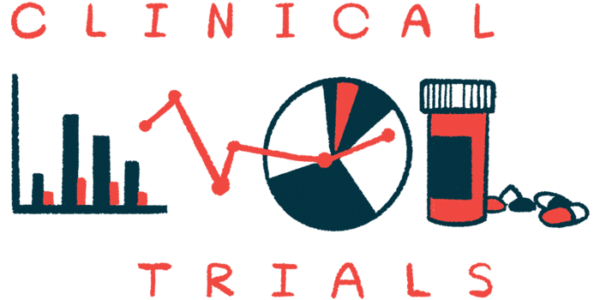Seladelpar found to reduce disease activity, itch in PBC patients in trial
Final results of RESPONSE study show benefits of CymaBay's oral therapy

Daily treatment with seladelpar, CymaBay Therapeutics’ investigational oral candidate for people with primary biliary cholangitis (PBC), was shown to normalize liver biomarkers and reduce itch, or pruritis, among patients.
That’s according to the final results of the RESPONSE clinical trial (NCT04620733), detailed in “A Phase 3 Trial of Seladelpar in Primary Biliary Cholangitis,” which was published in The New England Journal of Medicine.
“PBC is an uncommon liver disease with a lack of treatment options; current therapy choices either lack sufficient efficacy or can sometimes make symptoms worse,” Gideon Hirschfield, MD, the Lily and Terry Horner chair in autoimmune liver disease research at the Toronto Centre for Liver Disease, in Canada, told Liver Disease News in an email. Hirschfield served as an investigator on the Phase 3 trial and is the study’s first author.
The positive RESPONSE findings mean “excitement” for the PBC community, according to Hirschfield, who noted that seladelpar “was effective in controlling … disease activity as measured by blood tests, with significant reductions in itch.”
“During the study the drug importantly appeared safe and well tolerated,” Hirschfield added.
Decision on Seladelpar approval in US expected in August
Data from RESPONSE and other clinical trials to date backed CymaBay’s applications seeking approval of seladelpar for treating certain adults with PBC who have inadequately responded to or could not tolerate first-line treatment with ursodeoxycholic acid, known as UDCA.
The U.S. Food and Drug Administration last month granted priority review to the U.S. application on seladelpar; a decision on whether to approve the therapy is expected by Aug. 14. Similar applications also were accepted for review in the European Union and the U.K.
Charles McWherter, PhD, CymaBay’s chief scientific officer and the study’s senior author, said in a press release that the new data will “benefit researchers … in our collective pursuit of PBC treatment transformation.”
“The publication of the pivotal Phase 3 data for seladelpar … recognizes the importance of these findings, the potential of this investigational agent to help people living with PBC, and the significant need for innovation in this area,” said McWherter, also the president of research and development at CymaBay, which is being acquired by Gilead Sciences.
PBC is a chronic autoimmune disease that causes cholangitis, or inflammation in the bile ducts that transport bile, a digestive fluid, out of the liver. Impaired bile flow, or cholestasis, then promotes bile acid buildup to toxic levels in the liver, their leakage into the bloodstream, and liver damage that may progress to irreversible scarring, known as cirrhosis.
UDCA is the only first-line therapy approved for treating PBC in the U.S., where it’s sold under the brand names Urso and Actigall. Ocaliva (obeticholic acid), a second-line PBC treatment, can be used when patients don’t respond to UDCA, but it is known to worsen pruritis for some patients.
Seladelpar is a selective activator of PPAR-delta, a protein that regulates genes involved in PBC-related processes. These include bile acid generation, inflammation, and scarring. It therefore is expected to ease liver damage and PBC symptoms.
RESPONSE enrolled nearly 200 PBC patients for whom UDCA did not work
The global RESPONSE trial enrolled 193 PBC patients, ages 18-75. All either did not tolerate UDCA or had an inadequate response to it, and had continued elevations in the liver enzyme alkaline phosphatase (ALP), a marker of liver damage, after at least a year of treatment.
Participants in the study were randomly assigned to receive an oral capsule of either seladelpar (10 mg) or a placebo, once daily for a year. Most (93.8%) continued on background UDCA therapy.
The study’s main goal was to assess the proportion of patients who achieved a biochemical response to the treatment. This was defined as reaching an ALP level less than 1.67 times the upper limit of normal with at least a 15% decline from the trial’s start, as well as a level normalization of bilirubin, a substance found in bile.
This goal was met by a significantly greater proportion of patients on seladelpar relative to those given the placebo (61.7% vs. 20%).
Normalization of ALP levels, a key secondary trial goal, was reached by a quarter of seladelpar-treated patients and none of those on the placebo — again a statistically significant difference. The average ALP decrease was 42.4% with seladelpar and 4.3% with the placebo.
The therapy also was associated with significantly greater drops in the levels of other liver damage markers compared with the placebo.
At the study’s start, a little more than one-third of patients in each group reported moderate to severe pruritis, reflected by a score of at least 4 of 10 on a daily numerical rating scale, or NRS.
Among those patients, significantly greater NRS score reductions were seen with seladelpar relative to the placebo after six months (by 3.2 vs. 1.7 points), and these were sustained for a year. Similar results were observed for the overall patient population, as well in other measures of patient-reported itch.
Treatment’s benefits seen in all patients covered by approval application
Seladelpar’s benefits were observed both in patients without cirrhosis and those with compensated cirrhosis (Child-Pugh class A) — the two groups covered by CymaBay’s regulatory applications.
The safety findings were similar between groups, with the most common side effects being COVID-19 and pruritis. No serious adverse events were considered related to seladelpar.
RESPONSE data, “together with the existing substantial experience gained from prior studies, robustly support the potential for seladelpar to raise the bar in PBC treatment,” Hirschfield said in the press release.
[RESPONSE data,] together with the existing substantial experience gained from prior studies, robustly support the potential for seladelpar to raise the bar in PBC treatment.
In his email, Hirschfield noted that people with PBC “are seeking what other patients seek — they want highly effective drugs that treat the disease and make them feel better, live better, and live longer.”
It’s the company’s hope that seladelpar will help meet that unmet need, Hirschfield said.
“I really hope that by having new potential treatment choices, that wherever a patient lives, they can then get seen and treated promptly by clinical teams committed to managing liver disease, and that the PBC treatments they receive are increasingly effective,” Hirschfield added.



